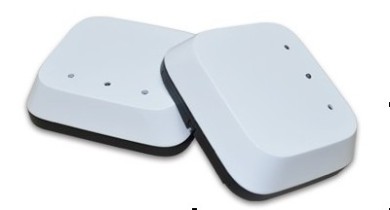While successful wireless standards such as IEEE802.11x, GSM and Bluetooth, have been relatively easy to sell, bringing standardisation into the realms of more straightforward, low data rate, communications is significantly tougher. Within this environment, the efforts of the ZigBee Alliance to standardise network and application-support layers has, arguably, failed to make a convincing impression. Does ZigBee have a future?
The nature of RF design and the mentality of the typical RF design engineer being what it is, means there will invariably be a proprietary system that offers a better fit for a particular application. However, the attractions of standardisation for low data rate communications remain compelling. Chief among these being potential economies of scale, reductions in time to market, and opportunities to establish widespread ad-hoc interoperability.
ZigBee capabilities and opportunities
The ZigBee protocol is widely viewed as a companion to WiFi and Bluetooth, operating in the same 2.4GHz unlicensed radio spectrum and slotting-in neatly below Bluetooth in the power/data rate continuum. ZigBee also specifies the lower-frequency 915MHz and 868MHz unlicensed bands available in the Americas and Europe respectively. At 2.4GHZ, ZigBee provides 16 channels and supports a maximum data rate of 250kbit/s.
The standard is managed by the ZigBee Alliance, and takes advantage of the established IEEE802.15.4 PHY and MAC layers. 802.15.4 provides a convenient and robust radio specification, delivering benefits such as a straightforward power management strategy comprising fully operational and stand-by modes only. This provides the basis for very long battery lifetimes, which can be up to several years, while at the same time simplifying application design.
Yet some may view ZigBee as a problem child
Currently, the majority of anticipated applications are in domestic controls and utility metering, as well as industrial, scientific and medical (ISM) equipment. To penetrate these applications, however, it must entice product developers away from the RF designs and supporting knowledge and IP embedded in existing products.
For example, a wireless key fob for a vehicle or garage door opener system may already be functioning satisfactorily using a proprietary standard in the 868MHz or 433MHz band. Migrating this to ZigBee would be a significant undertaking, only considered for a significant improvement in the product, such as improving security or tamper-resistance.
Developing with ZigBee and rivals
The ZigBee Alliance has defined standards from the network layer to the application support layer, which combine with the 802.15.4 lower layers to provide a complete wireless stack.
Semiconductor vendors such as Microchip, Atmel and Freescale have introduced complete modules for ZigBee development, comprising the 802.15.4 radio and ZigBee upper layers and integrating the microcontroller for ZigBee firmware and application hosting.
Using these modules, engineers are able to complete functioning designs without specialist design skills such as RF matching and board layout. Development boards supporting these modules provide a kick-start for application development. In fact, Meshnetics, which provides software development kits supporting hardware platforms from a number of vendors, claims a ZigBee network can be set up for evaluation within one hour.
But there are many other modules on offer to designers that provide the convenience of turnkey RF hardware design and an approved radio specification. Designers using 802.15.4 radio modules, for example, are free to use alternative upper layers, and the vendors of ZigBee modules provide the flexibility for designers to make their own choices. On the other hand, some silicon vendors offer complete transceiver modules based on proprietary radio specifications that are pre-approved to acceptance criteria in international territories.
The absence of any license fee is a major advantage to designers using proprietary products but, on the other hand, greater economies of scale may be available with a ZigBee-based system.
ZigBee strengths
As a managed standard designed to provide robust security features, allow large numbers of nodes, and support interoperability and vendor independence, ZigBee has convincing arguments in its favour.
It also embodies features that enable outstanding performance at relatively low power consumption. For example, support for multi-hop communications and flexible routing enable effective transmission distances to be extended beyond the single hop range of the 802.15.4 radio standard without resorting to increasing transmitter power.
Where the typical single-hop range is around 30m – but may be between 10m and 100m depending on environmental conditions, antenna performance and operating frequency band – the cumulative range of a ZigBee node can be extended to hundreds, or even thousands, of metres.
In addition, by supporting data rates up to 250kbit/s, when operated in the 2.4GHz band, ZigBee can deliver additional savings in transmitter power compared to networks using slower protocols.
In sensor networks, for example, where data collection rates may be comfortably inside this capability, ZigBee’s ability to complete data transactions quickly allows the transmitter to be powered off for longer periods. Since the power dissipated by the transmitter is largely independent of its operating speed, ZigBee delivers power savings by reducing the average energy per bit.
Compared with some proprietary systems, using a proven ZigBee module also helps with type approvals. The module vendor will already have overcome the majority of compliance hurdles, which effectively short-cuts a significant part of the approvals process. Alternatively, a significant number of proprietary offerings also carry relevant approvals.
An Achilles heel?
Designers, therefore, have a number of choices when selecting a platform for low data rate networking over long distances. The trend towards delivering the radio module as a complete module is quite commonplace among proprietary, non-ZigBee systems, as well as within the ZigBee environmen t. Although ZigBee is not the only system emphasising ease of design, the licensing structure maintained by the ZigBee Alliance adds to the cost of entry for ZigBee development.
Catalysts over the horizon
On the whole, ZigBee faces a tougher challenge to gain adherents than either Bluetooth or WiFi. Potential markets are diverse and also tend to be of lower total value. A number of well-established products are already in place, even though these do not offer the same potential for ubiquitous ad hoc interoperability. Moreover, the associated license fees remain relatively high.
It is worth remembering that the future of Bluetooth was in doubt for some time, until governments imposed legislation on the use of mobile phones in cars and in so doing kick-started the market for Bluetooth headsets. It is hard to imagine a likely legislative catalyst for ZigBee and a ‘killer application’ to drive mass adoption seems unlikely, taking into account the characteristics of ISM markets.
On the other hand, the standard is now widely understood, development platforms and silicon are readily available, and demand for wirelessly networked products in consumer and professional fields continue to grow strongly. If there are sound technical justifications for ZigBee, reducing the cost of entry may be sufficient to secure a successful future.
For more, contact liuj@wulian.cc

